Conservation Genetics of Tarpon in Coastal Fisheries
Dr. Rocky Ward, Perry R. Bass Marine fisheries Research Station
The word 'stocking' has a way of drawing everyone's attention because enhancement programs have helped -- or hurt -- many species. In Texas, stocking has contributed to the recovery of red drum and spotted seatrout recreational fisheries. In other parts of the world however, poorly designed stockings have led to loss of genetic diversity and degraded fisheries. Texas Parks and Wildlife Department's Coastal Fisheries Division has actively work to avoid the negative impacts of stocking and has implemented a policy relying on gathering extensive data on the genetic resources of a species prior to initiation of an enhancement program.
Thus, when proposals were made to investigate the possibility of spawning and stocking tarpon using TPWD's marine hatcheries, the geneticists at Perry R. Bass Marine fisheries Research Station designed research to investigate the genetic structure of tarpon in Texas marine waters, the Gulf of Mexico and across the remaining range of the species. We needed to know whether the tarpon that visit Texas are all members of a single stock and what was the geographical extent of the stocks in Texas tarpon fishery. The answer to the first question would tell us how to design our stocking strategy. The answer to the second question would tell us where we could obtain the appropriate broodfish.
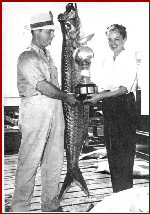
The decision was made to use a number of different genetic markers to evaluate Texas stocks. Protein expression, mitochondrial DNA, and nuclear DNA all give different perspectives on genetic variability in a species. All were used with tarpon. Thanks to the cooperation of fishermen, guides, tournament directors, and researchers, we were able to obtain tissue samples from all across the distribution of tarpon. Samples came from Africa, Brazil, the Pacific Coast of Panama, from across the Caribbean and along the Atlantic Coast of the U.S.
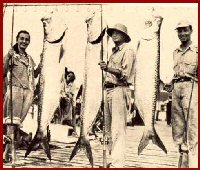
Each of the evaluation techniques provided an interlocking piece of the puzzle. Protein variation told us that there were differences between fish in the western and eastern Gulf of Mexico. Mitochondrial DNA told us that the most isolated populations (Africa and the Pacific) were distinct from Caribbean and north Atlantic tarpon. Finally, microsatellites, which are mostly nuclear DNA markers, gave us a better understanding of the high levels of migration across the North Atlantic, Caribbean, and Gulf. All data support the idea of weak differentiation between the western and eastern Gulf of Mexico, suggesting two areas of spawning, one in the Bay of Campeche and long the Mexican Gulf Coast, and the other in southern Florida and in the Caribbean. Tagging studies suggest that after spawning, spent tarpon migrate north and west from Florida and north and east from the Caribbean, meeting in the northern Gulf between Texas and the Mouth of the Mississippi.
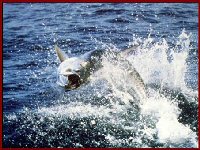
What do these findings tell us about stocking tarpon in Texas? First, we need to be careful. The tarpon that visit Texas in summer are a mixed stock of tarpon, most of them are from Mexico but some are from Florida and the Caribbean. That means we need to have a diverse group of broodfish, captured in Texas waters, making sure that the fish come from different schools and from across the entire season. We also need to maintain a large number of broodfish to be certain that the genetic diversity of Texas tarpon is represented in our tanks at Sea Center Texas. It is critical to have equal numbers of males and females, so that the contribution of each broodfish to the spawns is as even as possible.
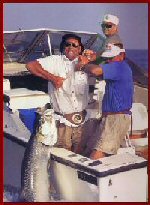
Even with the knowledge we’ve gotten so far, questions remain. Will we be able to culture and stock tarpon in our facilities on the Texas coast? Tarpon have a complex larval life cycle and mature late. We also still have a lot to learn about their reproductive chemistry and the environmental conditions which lead to spawning. Spawning in captivity won't be easy, and once spawned, the juveniles must be raised to stocking size – a difficult task to be sure.
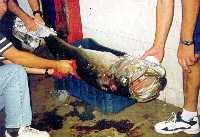
However, there's one thing Texans can count on. If we are able to stock tarpon, we'll do it the way we should. We'll use a strategy that will protect the genetic integrity of our wild tarpon. Someday, maybe you will catch a hundred-pound silver king that began its life at Sea Center. If you do, rest assured that genetically, it will be a true Texan.
© Copyright Texas Parks and Wildlife Department. No part of this work may be copied, reproduced, or translated in any form or medium without the prior written consent of Texas Parks Wildlife Department except where specifically noted. If you want to use these articles, see Site Policies